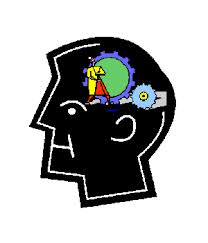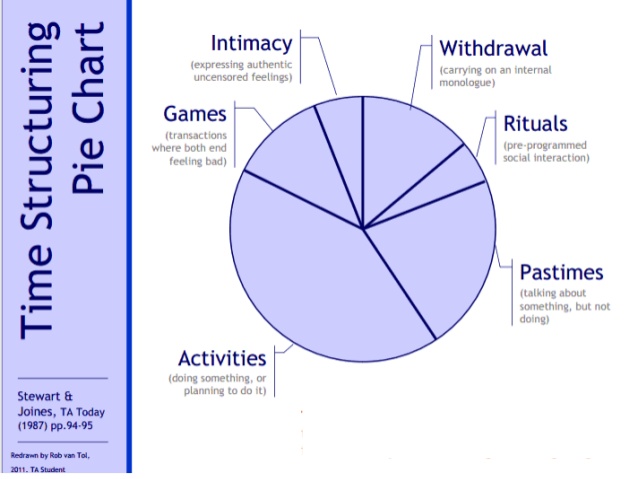 A recent clash with a very difficult individual took me into a full on emotional tail spin: it felt more than just a minor irritation like a dark cloud failing to pass by like they usually do. A few days later I’m still playing through in my mind the latest outrage this person feels (they are one of those select people who can start an argument in an empty room) at some imagined misdemeanor that has apparently been committed. It took me a while to calm down enough to recognise why my usual strategies weren’t working; my hyper vigilance was on full alert, the radar scanning the near (and far) horizon. It’s somebody being unnecessarily rude, bullying and wanting to lash out, and reminds me of the emotions I️ had as a child around seeing anger of others. A few days on after surviving the earthquake of criticism the ground has subsided, but the aftershocks manifest themselves into periods of anxiety, poor sleep and retreating into my shell.
A recent clash with a very difficult individual took me into a full on emotional tail spin: it felt more than just a minor irritation like a dark cloud failing to pass by like they usually do. A few days later I’m still playing through in my mind the latest outrage this person feels (they are one of those select people who can start an argument in an empty room) at some imagined misdemeanor that has apparently been committed. It took me a while to calm down enough to recognise why my usual strategies weren’t working; my hyper vigilance was on full alert, the radar scanning the near (and far) horizon. It’s somebody being unnecessarily rude, bullying and wanting to lash out, and reminds me of the emotions I️ had as a child around seeing anger of others. A few days on after surviving the earthquake of criticism the ground has subsided, but the aftershocks manifest themselves into periods of anxiety, poor sleep and retreating into my shell.
So, the first article was around the origins of trauma and how it manifests itself. This one is around my strategies for dealing with trauma; a personalised set of approaches a lot that involve self-awareness and self-reflection along with some that need the support of others that usually work, along with the notion that “this too will pass”.
1. Understand what’s going on and dealing with worry
 The first blog on trauma is informed by some of the theory and trauma literature I️ came across on the psychotherapy training course at Metanoia. For me it’s something like “owning my history”; knowing that I️ suffered trauma as a child, accepting that, in a strange way a bit like having a proper diagnosis of what is wrong; a friend who is a doctor told me recently that she told a patient some terrible news about a terminal illness, but that he was grateful and in a weird way pleased, as he finally knew what was wrong with him. Part of the difficulty is being able to accept what happened if we have faced trauma and to be able to deal with the shame of it.
The first blog on trauma is informed by some of the theory and trauma literature I️ came across on the psychotherapy training course at Metanoia. For me it’s something like “owning my history”; knowing that I️ suffered trauma as a child, accepting that, in a strange way a bit like having a proper diagnosis of what is wrong; a friend who is a doctor told me recently that she told a patient some terrible news about a terminal illness, but that he was grateful and in a weird way pleased, as he finally knew what was wrong with him. Part of the difficulty is being able to accept what happened if we have faced trauma and to be able to deal with the shame of it.
I️ tend to think of the severity of a fall out in 3 different levels:
| Level 1 | A kind of every day situation with a few harsh words, a disappointment about something that is replaced after a few minutes by the next challenge and soon forgotten |
| Level 2 | A “worry plus” where something significant has happened and won’t just be passed through quickly; will require self-reflection and perhaps talking through with someone else |
| Level 3 | Full scale alert; almost the need to accept the hit, sink to the bottom of the ocean emotion wise, lick your wounds and have a quiet few days to get through and take learning from what happened |
My experience these days is that most of the anxiety is at Level 1 and something I can work through; what the writer and Buddhist and psychotherapist Bruce Tift calls a kind of mild “disturbance”, that there has been a ripple of annoyance or isolation, or upset but we can rationalize it and accept it will pass relatively quickly. He posits that there are so many books and experts that try to sure us encouraging us to achieve some future positive state, but what if we are already free? What if even our intense anxiety is not actually a problem but instead (as he writes) “an intelligent response to the perception of groundlessness”? There are also some useful tips on what I call Level 1 worry in the dealing with worry article.
Thomas Moore (who wrote the wonderful book Dark nights of the soul) wrote: “first you see, then you know. First you have to be present to what is going on, and that requires at least a modicum of interest. You have to be interested in yourself, almost as an object. Things are happening to you that you don’t initiate, and you have to look at those things carefully and closely. This kind of self-interest may then turn into a positive kind of self-love, and that is the beginning of healing. If you can discover your essential beauty, in spite of all your problems and imperfections, you are on the way toward well-being. A preliminary step is simply to accept yourself with all your failures and imperfections. You must get the ego out of the way—the thought that you are so exalted that in your refined state you would be perfect. Acceptance is the beginning of genuine and honest self-love, a requirement for perceiving your own beauty.”
2. Every day prevention; practicing self-compassion
 I have found through my own learning and working with clients with their challenges in coaching, that how I treat myself in difficult times is crucial. Many of us are familiar with the concept of compassion towards others. Being compassionate towards ourselves is for many of us, somewhat harder to talk about and live. Self-compassion involves acting the same way towards yourself when you are having a difficult time, fail, or notice something you don’t like about yourself. Bruce Tift says “the choice is whether were going to approach ourselves with fundamental aggression or with fundamental kindness…when we love all of ourselves (including our fears and dark places), we stop attacking ourselves, because we now understand that were attacking our own vulnerability”.
I have found through my own learning and working with clients with their challenges in coaching, that how I treat myself in difficult times is crucial. Many of us are familiar with the concept of compassion towards others. Being compassionate towards ourselves is for many of us, somewhat harder to talk about and live. Self-compassion involves acting the same way towards yourself when you are having a difficult time, fail, or notice something you don’t like about yourself. Bruce Tift says “the choice is whether were going to approach ourselves with fundamental aggression or with fundamental kindness…when we love all of ourselves (including our fears and dark places), we stop attacking ourselves, because we now understand that were attacking our own vulnerability”.
Instead of just ignoring your pain with a “stiff upper lip” mentality, you stop to tell yourself: this is really difficult right now, how can I comfort and care for myself in this moment?” Instead of mercilessly judging and criticising yourself for various inadequacies or shortcomings, self-compassion means you are kind and understanding when confronted with personal failings. Typically, it is seen as having three main components:
(1) being kind and open to one’s own suffering
(2) an awareness of sharing experiences with others: a common humanity and
(3) practicing mindfulness approaches
There is more information in the article on self-compassion.
My own practice is more and more through using meditation to steady myself and be present. I listen to meditations on apps like Insights Timer and particularly like approaches from self-compassion writers like Kristen Neff. One of her meditation mantras repeated in a mindfulness session I like is: “may I️ be safe, may I️ be peaceful, may I️ be healthy in mind and body and may I️ live with ease”. I have put together several home-made meditation recordings to listen to and have made some for clients I work with which they have found very helpful.
3. Talking it through
 Perhaps we all understand the power of talking is that we need to express to a trusted soul what’s happening inside our minds and bodies and experience the balm of it being understood.
Perhaps we all understand the power of talking is that we need to express to a trusted soul what’s happening inside our minds and bodies and experience the balm of it being understood.
Sometimes it’s just bearing witness; they don’t have to solve it for us, but truly empathise and hear the struggle we are facing. A few close family and friends who really get you and can be there to really listen, and when it’s bad, not make it OK. Typically, in my experience they have had some experience of it themselves and understand from personal experience what you are facing.
In terms of professional therapy support, that is an option for really going into depth about our early years, and how we became the people we are today. My initial experience of therapy many years ago really helped to understand destructive patterns in myself and in relationships with others.
4. Unleashing emotions through creativity and exercise
 I️ have written in previous articles about the power of dissociation, where the brain takes over and stops us accessing our true feelings. For me it’s about breaking that stranglehold and learning to feel and know these feelings won’t crush and overwhelm us.
I️ have written in previous articles about the power of dissociation, where the brain takes over and stops us accessing our true feelings. For me it’s about breaking that stranglehold and learning to feel and know these feelings won’t crush and overwhelm us.
There are lots of ways of unleashing emotions if we struggle with talking them through; what I reflect on as a significant life lesson of learning to feel….
Creativity is the act of turning new and imaginative ideas into reality. Creativity is characterised by the ability to perceive the world in new ways, to find hidden patterns, to make connections between seemingly unrelated phenomena, and to generate solutions. Julie Burstein in her TED talk believes that creativity grows from broken places, from issues and challenges that we face in our lives
- Find your own way of releasing creativity: for me it’s been going back to playing the piano after years away from playing really helps; it’s a shortcut through to your feelings, and 30-40 minutes a couple of times a week really helps; I️ can almost feel something coming out of me like a toxin when I️ have finished l
- Journaling what’s happening for us. I do it periodically, especially as a way of reflecting on something that gone well, or something conversely that’s not gone well that I need to process
- Go regularly into nature; not only does this help connect us to something bigger and spiritual it puts us as individuals into perspective
Finally, an acceptance and recognition that anger is natural. You may not like it but it has its place and, depending on your temperament, it may be a constant in your life. Anger arrives on its own schedule and for its own purposes, and its schedule may be different from yours.
For the last 10 years I have exercised pretty much every day in some form or other, which I’m convinced also helps manage or sometimes even dissolve any lingering emotions about something that upset me. When you are doing it, you are pretty focused on it whether its running, swimming or cycling, and at the end of it everything seems just that bit more manageable.
5. Long term work on mindset/spirituality
 The writer Lee Stringer who wrote the story of his life on the streets of New York, where he was hooked on alcohol, cocaine, and crack said “it has occurred to me since that perhaps what we call depression isn’t really a disorder at all but, like physical pain, an alarm of sorts, alerting us that something is undoubtedly wrong; that perhaps it is time to stop, take a time-out, take as long as it takes, and attend to the unaddressed business of filling our souls.” So maybe in some strange perverse way we can work on seeing our dark nights not always as problems but more as opportunities for change. What are our minds and body trying to tell us?
The writer Lee Stringer who wrote the story of his life on the streets of New York, where he was hooked on alcohol, cocaine, and crack said “it has occurred to me since that perhaps what we call depression isn’t really a disorder at all but, like physical pain, an alarm of sorts, alerting us that something is undoubtedly wrong; that perhaps it is time to stop, take a time-out, take as long as it takes, and attend to the unaddressed business of filling our souls.” So maybe in some strange perverse way we can work on seeing our dark nights not always as problems but more as opportunities for change. What are our minds and body trying to tell us?
Thomas Moore uses Carl Jung’s work on the idea of the shadow in us: “in your darkness you may discover a part of you that is essential to your being, but unfamiliar. The darkness doesn’t exactly come from outside, but is a revelation of something in your nature. In your black moods and dark fears, you find an essential part of yourself. However, you present yourself to the world, on some level you are a dark person. You have thoughts you don’t usually tell people. You are capable of things that your friends may know nothing about. You are probably more interesting sexually than the world realises. You probably have some anger and fears that you don’t tell people about. You may have secrets from your past that make you more intriguing than your persona would suggest. Certainly, your potential for darker thoughts and behavior is rich”
Moore suggests taking a Zen-like approach. When you feel blue, be blue. Don’t feign cheerfulness. Speak for the mood. The more you allow it some autonomy, the less identified you are with it. It can come and go like a cloud, without your being attached to it. If external circumstances are responsible, enter into them but don’t become obsessed
Overall reflections
 I do find, when I’m in the middle of a difficult patch (which don’t come too often these days, thank goodness) that I feel I haven’t really moved on and am caught in the words of Freud in a “repetitive compulsive” cycle. More often than not though, when I am in an OK place, I know that I have climbed more ladders than slipped down snakes over the years, that the difficult times come much less often and don’t last as long.
I do find, when I’m in the middle of a difficult patch (which don’t come too often these days, thank goodness) that I feel I haven’t really moved on and am caught in the words of Freud in a “repetitive compulsive” cycle. More often than not though, when I am in an OK place, I know that I have climbed more ladders than slipped down snakes over the years, that the difficult times come much less often and don’t last as long.
I also take heart from some of the latest work in the world of neuroscience, that with enough time and resilience, we can do at least a partially good job of re-wiring ourselves!
The other thing is as we get older and wiser, we have more awareness of the things we love doing, what we feel neutral about and what we really dislike. Whilst there are lots of approaches out there that exhort us to stretch ourselves and learn new experiences (and I’m all for that) there is also something about knowing your “window of tolerance” that allows you to stretch and try new things or get better at things you do currently, but not to overstretch too much. I am perfectly at peace for example, about not speaking at another major conference, or indeed organizing one: something I wont do for the rest of my life!
I hope I have provoked some thinking and ideas about approaches to dealing with trauma and would encourage you to ask some fundamental questions of yourself;
- How do you handle anxiety when it comes along?
- What works for you and what doesn’t work- do you know?
- Has it changed as you have got older?








